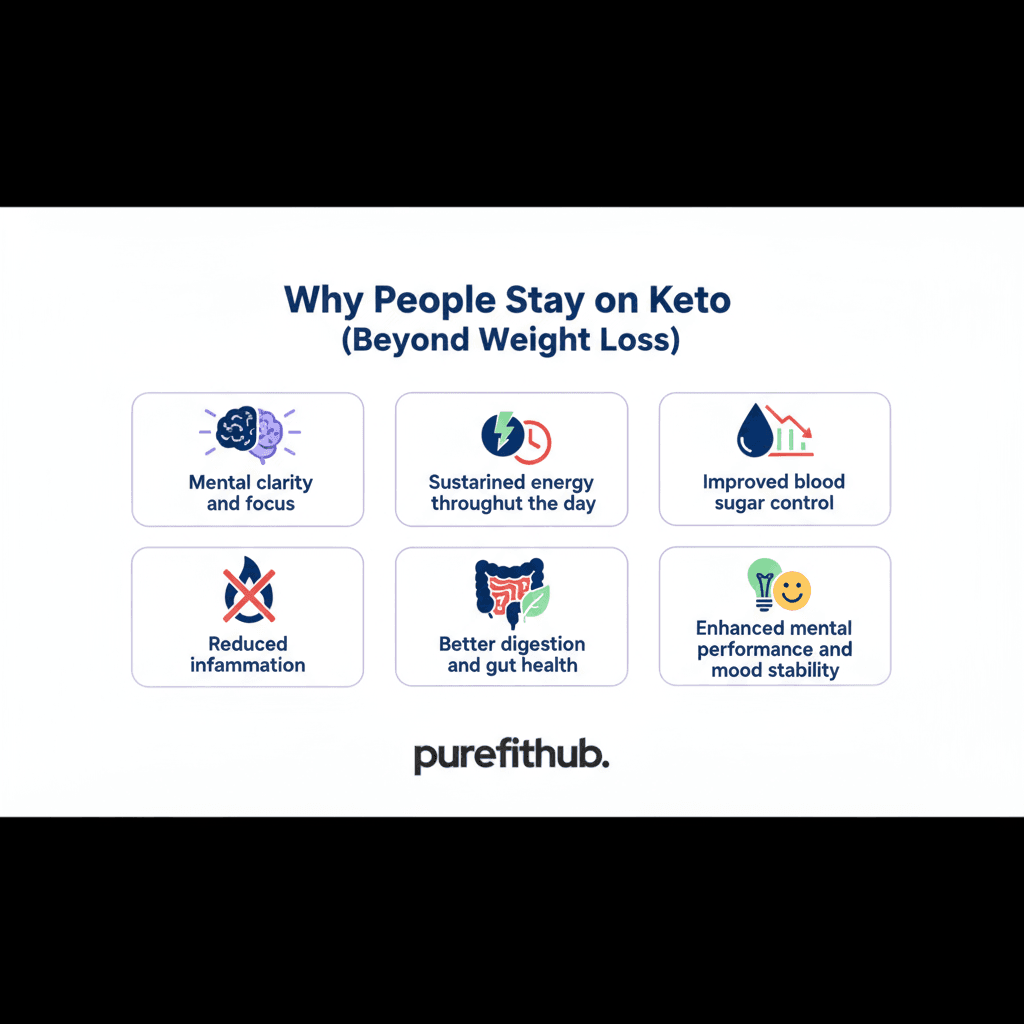You’ve probably seen endless debates over the “best” diet — keto lovers swear by fat, plant-based followers put plants on a pedestal, and intermittent fasting fans insist the clock is the secret. But here’s a truth most people miss: even the best diet in the world will fail if you’re not eating the right amount for your body. That’s where the Purefithub Protein & Calorie Calculator comes in — a tool designed to bridge the gap between dietary theory and daily practice.
Before you make your next meal plan, run your numbers. The difference could be the missing piece in your progress.
Introduction: Why the “Right Amount” Matters More Than the “Right Diet”
Diet debates can feel endless. Scroll through social media and you’ll find people passionately defending their eating style as if it’s the only correct one. But here’s the thing: every diet, no matter how it’s marketed, boils down to the same principle — your body needs the right amount of fuel and nutrients to function, repair, and thrive.
The problem? Most people guess. They “eyeball” portions, skip tracking altogether, or rely on generic calorie charts that don’t reflect their actual needs. The result is frustration — slow results for some, unexpected weight gain for others, and a whole lot of confusion.
Using a precise calculator takes away the guesswork. It’s like upgrading from a map drawn in pencil to GPS with turn-by-turn directions. And when you combine it with the eating pattern that suits you best, you suddenly have both the blueprint and the tools to build real results.
For example, in our guide on Functional Diets & Controversial Eating Patterns, we explored the science and controversy behind different diet trends. This article builds on that knowledge — showing you how to make those diets actually work for your body.
Why the Right Diet Still Needs the Right Numbers


One of the most common misconceptions in nutrition is that the type of diet alone determines results. Someone might say, “I’m on keto, so I’ll automatically lose weight,” or “I’m vegan, so I’ll automatically be healthier.” In reality, your body doesn’t read diet labels — it responds to the nutrients and energy you provide it.
Here’s a simple example: Imagine two people following intermittent fasting. One eats balanced meals during their eating window, hitting their calorie and protein targets. The other eats random snacks, often low in protein, and ends up under-eating on some days and over-eating on others. After a few months, their results will be worlds apart, even though the “diet name” was the same.
The difference is precision and consistency — which is exactly what the calculator brings to the table.
Why Protein Gets Priority
While calories determine whether you gain or lose weight, protein determines the quality of that weight change. Without enough protein, you risk losing muscle when dieting, or gaining unnecessary fat when bulking.
The Protein & Calorie Calculator prioritizes protein for a reason:
- Muscle preservation during calorie deficits
- Muscle growth when in a calorie surplus
- Satiety (protein helps you stay fuller longer)
- Metabolic boost — protein digestion burns more calories compared to carbs or fat
For example, a 70kg active person looking to build lean muscle might be advised to eat around 120–140g of protein daily. This can be spread across meals, whether they follow a traditional 3-meal plan, intermittent fasting, or a plant-based diet.
Why a Calculator Beats Guesswork
Human bodies aren’t copy-paste identical. Two people of the same age and height might need wildly different amounts of calories and protein simply because of differences in muscle mass, activity level, or even hormonal health.
When you input your personal stats into the Protein & Calorie Calculator, you’re not just getting numbers — you’re getting a tailored starting point. You’ll know:
- How much protein to consume to maintain or build muscle
- How many calories to eat to lose fat, maintain weight, or gain mass
- How to adjust those numbers for rest days versus training days
Once you have that baseline, adapting it to your preferred eating style becomes much easier.
Adapting the Calculator for Different Diet Patterns
Let’s take this from theory into practice. Here’s how the same calculator results might look through the lens of different eating patterns.
Keto Diet
If you follow keto, your goal is to keep carbs low while maintaining enough protein to preserve muscle. After running the calculator, you’ll keep protein around the recommended grams, but shift the remaining calories toward healthy fats. This ensures you stay in ketosis without shortchanging your muscles.
Intermittent Fasting (IF)
With IF, the eating window is shorter, but the daily totals still matter. The calculator helps you figure out exactly how much protein and calories to fit into your window — so you’re not just eating “less,” you’re eating the right amounts for your goals.
Plant-Based or Vegan
Protein needs can be a challenge here, especially without animal sources. Your calculator results give you a daily protein target, which you can hit using legumes, tofu, tempeh, seitan, and plant-based protein powders.
High-Protein Muscle Gain
If your goal is bulking, you’ll adjust the calorie number upward and maintain a higher protein ratio. The calculator tells you how high to go without spilling over into excess fat gain.
Matching Your Calculator Results to Your Lifestyle
One of the biggest advantages of using the calculator is flexibility. Instead of rigidly following a pre-made plan, you can adapt your numbers to your lifestyle.
If you train in the morning but work late, you might choose to have a larger breakfast, a moderate lunch, and a lighter dinner. If you’re on intermittent fasting, you could split your protein target evenly across 2–3 meals in your eating window. If you’re on keto, your fat intake will be higher, but the total calories and protein stay aligned with your goal.
The beauty is — the calculator doesn’t tell you what foods to eat, just the targets to hit. That means you can plug in your favourite recipes, cultural foods, or restaurant meals without “breaking” your diet.
Adjusting Over Time: The Feedback Loop
Your calorie and protein needs aren’t fixed forever. As you lose weight, gain muscle, or change activity levels, your body’s energy demands shift.
That’s why revisiting the Protein & Calorie Calculator every few months is crucial. A number that worked perfectly for you 10kg ago might now cause a plateau.
Think of it like tuning a car — you don’t just set it once and never check again. You adjust based on mileage, performance, and road conditions.
A Note on Quality vs Quantity
While numbers matter, the quality of your food still plays a huge role in health outcomes. For example, you could technically hit your calorie and protein targets eating only processed protein bars and sugary drinks — but your energy, digestion, and long-term health would suffer.
Pair the calculator’s precision with nutrient-dense foods:
- Lean proteins or plant-based protein sources
- Colourful vegetables and fruits for micronutrients
- Healthy fats for hormonal health
- Whole grains or smart carb choices for sustained energy
From Numbers to Results: A 3-Step Starter Plan
To make this practical, here’s how you can start today:
- Step 1: Visit the Protein & Calorie Calculator and enter your personal stats and goals.
- Step 2: Choose your eating pattern — whether keto, IF, plant-based, or balanced diet — and adjust food choices to meet your calorie and protein targets.
- Step 3: Track your intake for at least 2 weeks and note your progress. If your weight, energy, or performance isn’t moving in the right direction, revisit the calculator and adjust.
Common Mistakes People Make When Tracking
The calculator is only as good as how you use it. Some people underestimate portions, forget about cooking oils, or track inconsistently. Others panic when they’re slightly over their target and overcompensate the next day.
The key is consistency over perfection. Think of your calorie and protein numbers as guide rails, not prison bars. Even a slightly imperfect tracking habit will outperform pure guesswork.
Real-Life Case Study: How the Calculator Changed Two Diet Journeys
Case 1 – The Keto Plateau
Anil, a 34-year-old software engineer, had been on keto for six months. Initially, he lost weight quickly, but then progress stalled. He felt frustrated, thinking keto had “stopped working.”
After using the Protein & Calorie Calculator, he discovered that his daily calories had slowly crept up — mostly from high-fat snacks like cheese and nuts. He was still in ketosis, but his total intake exceeded his maintenance calories. By slightly reducing portion sizes and ensuring his protein met the calculator’s target, he started losing fat again within two weeks.
Case 2 – The Plant-Based Muscle Builder
Priya, a 27-year-old fitness enthusiast, switched to a vegan diet but noticed her strength gains had slowed. She thought she was eating “enough” protein from lentils and beans, but when she ran her numbers, she was getting just 60g per day — far below the recommended amount for her training.
By using the calculator, she set a target of 110g of protein and began adding tofu, tempeh, and plant-based protein powder to her meals. Within a month, her lifts improved, and she gained lean muscle without excess fat.
Key takeaway: The diet name doesn’t determine results — precision in calorie and protein intake does.
Bringing It All Together
The most successful diet isn’t the one with the flashiest marketing — it’s the one you can stick to while consistently hitting your body’s needs. The Protein & Calorie Calculator gives you the framework, and your chosen eating pattern gives you the style. Together, they form a system you can trust.
If you’re still deciding which eating pattern fits you best, revisit our deep dive on Functional Diets & Controversial Eating Patterns and choose the one that feels sustainable. Then, run your numbers, start tracking, and let data guide your progress instead of guesswork.
Expert Q&A with a Nutritionist
Can the calculator replace professional advice?
Not entirely. The calculator gives you a science-based starting point, but a registered nutritionist can fine-tune your plan based on medical history, preferences, and specific performance goals.
How often should I recheck my numbers?
Every 8–12 weeks or after a significant change in weight, muscle mass, or activity level. Small adjustments can prevent plateaus.
Do I have to track every single day?
In the beginning, yes — to build awareness. Over time, you’ll get better at estimating portions and hitting targets intuitively.
What if I can’t hit my protein target?
Start by improving each meal’s protein content. If that’s still not enough, consider a high-quality protein supplement that fits your diet style.







